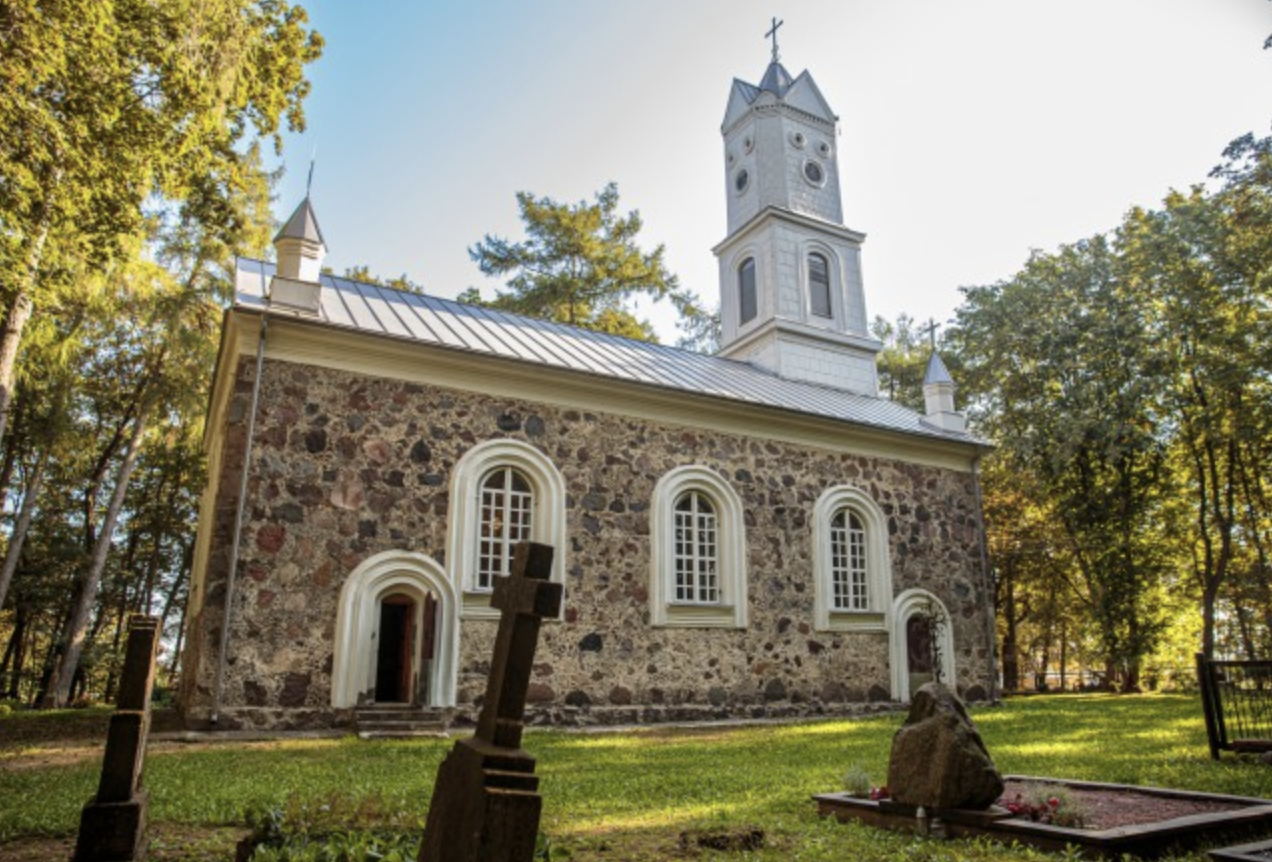




























Lančiūnavas St. Casimir Church

91

0

0
In 1863, Zigmantas Kognovickis, the owner of the Lančiūnavas estate, began building the church, but the construction was halted due to the uprising occurring at the time. It was not until 1874 that permission was granted to build a masonry burial chapel, which was completed in 1880. During this difficult period, when Catholic sanctuaries were being converted into Orthodox churches, the cult of St. Casimir gained special significance in Lithuania. The church, which was temporarily adapted as a cinema hall in the 1960s, reopened its doors in 1991.
The church is built in an eclectic Romantic style, with walls constructed from natural fieldstones and a tower made of bricks. The main altar wall is adorned with a triptych of frescoes, created by artist Bronius Rutkauskas in 1991-1992. The frescoes depict major Christian events: the Crucifixion of Christ and the Stations of the Cross, including the Ascension and the Descent into Heaven.
Info
-

Religious Heritage
-
Spotted an error? Let us know
Whats new?

Three impressive Baltic seaside spots: Olando Kepurė, Veczemē Cliffs, Pakri Cliffs

Discover Tallinn Old Town with MyTravis: a medieval spirit that surprises you at every step

Women's hike through the mystery of the fog from Ginučiai Hillfort to Ladakalnis

The first women’s hiking club hike in Marcinkonys: nature’s beauty, legends, and togetherness in Dzūkija

Nature Trails in the Pärnu Region: A Journey Through Estonia’s Natural Treasures

Šiauliai Chestnut Alley – a place where dozens of chestnut trees bloom

Kulautuva – the Pearl of the Nemunas Shore: What to See and Do?

Kauko Stairs in Kaunas – Woven with Myths and Natural Beauty


 Entertainment
Entertainment
 Food establishments
Food establishments
 55.349814, 24.152389
55.349814, 24.152389
 Get directions
Get directions
